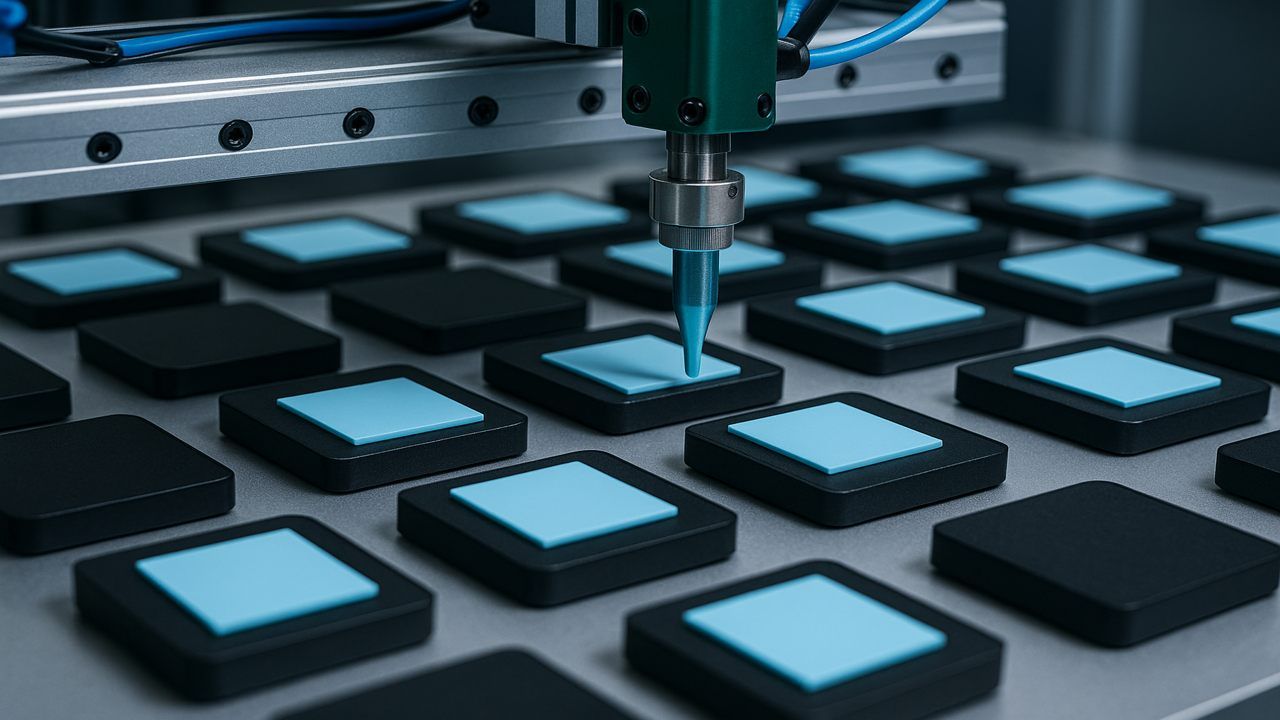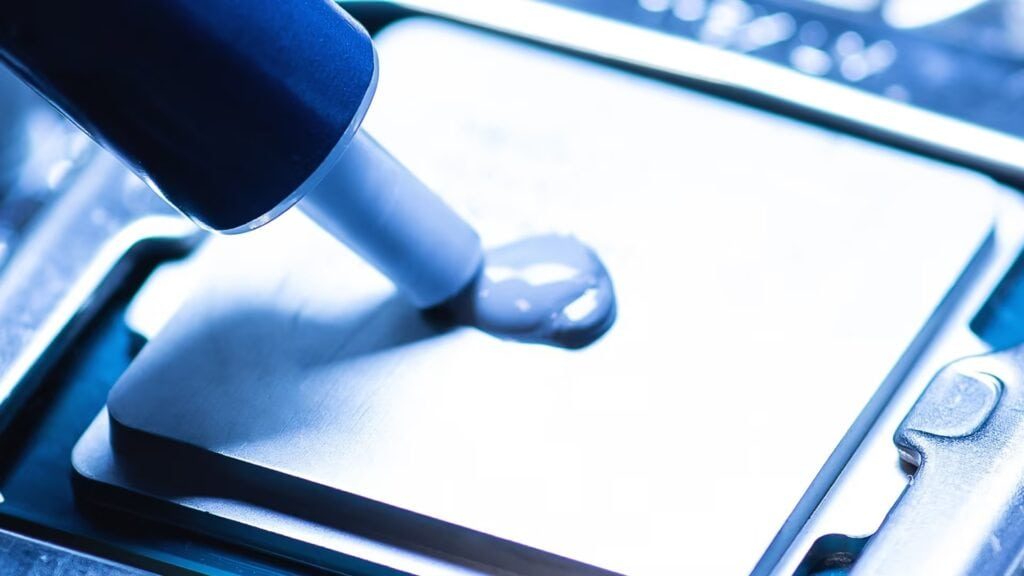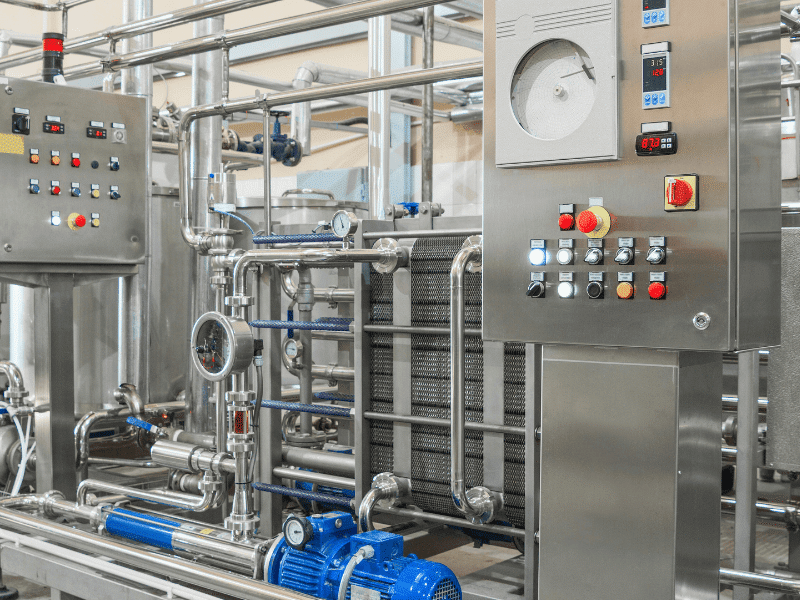Introduction
The production process of Thermal Pads involves deep science. This process begins with the selection of raw ingredients and ends with the production of a perfect final product. Skilled manpower, advanced automated machinery, and a balanced atmosphere are preferred for this purpose. As a result, the product provides optimal performance and longevity. The success of a product relies solely on the quality of raw materials and the manufacturer’s expertise.
Today, we will discuss the production process of thermal pads. How does a pad pass through each manufacturing phase? How does it become able to fight rising temperatures? What sort of technology and ingredients are used to ensure its performance efficiencies? What are the different types of thermal pads? How will thermal pads contribute as an advanced cooling product in the future? Now, let’s start the discussion to understand the process.
What is a Thermal Pad?
Thermal Pad is a reliable thermal interface material (TIM) that transfers heat and fills the air gaps between the two surfaces. It is mostly used in electronic devices, components, and gadgets, from small to large-scale.
A thermal pad features high thermal conductivity properties and complete electrical insulation. It has a well-structured physical form and is available in multiple sizes and shapes. These pads are completely hazard-free and safe to touch.
Core Features
- Thermal Pad offers thermal conductivity of 1 to 15 W/mK.
- Thermal Pad tolerates operating temperatures from -40 to +250 Degrees Celsius.
- Thermal Pad features complete Electrical Insulation to avoid mishaps.
- Thermal Pads keep the components safe from shocks and vibrations.
- Thermal Pads can be reused in specific situations.
- Thermal Pad features multiple shapes, sizes, and thicknesses.
- Thermal Pad is a reliable and durable choice for thermal management.
- Thermal Pads are an affordable choice for many.
Types of Thermal Pads
- Silicone Thermal Pads: Commonly used pads made from silicone and conductive fillers.
- Non-Silicone Thermal Pads: Made from non-silicone material to avoid contamination.
- Graphite Thermal Pads: Made from graphite sheets and used for high-end purposes.
- Phase Change Thermal Pads: Made from a material that changes its form based on temperature.
- Polyurethane-Based Thermal Pads: Made from a polyurethane matrix and conductive fillers.
Thermal Pad Production Process
– Raw Materials
- Base Material: Silicone Rubber or Thermoplastic Elastomer Matrix.
- Thermally Conductive Fillers: Metal Fillers, Ceramic Fillers, and Carbon-Based Fillers.
- Other Additives: Curing and Coupling Agents.
– Material Mixing & Degassing
Once the raw material is selected, the next step is mixing the ingredients. Mixing machines, including planetary mixers, internal mixers, and twin-screw extruders, are used for this purpose. Base material and conductive fillers are poured into the mixing machines. The mixing process continues until a consistent or homogeneous form is achieved. After the mixing process, degassing is performed to wipe out air gaps or bubbles. Such bubbles can affect the thermal conductivity of the material.
– Sheet Formation
After mixing and gaining a uniform state from the raw material, the next step is sheet formation. The core purpose of sheet formation is to shape the pads into different thicknesses and diameters. Calendering or Casting is performed for sheet formation. Calendaring includes passing the mixed material through heated rollers. The specific amount of heat from the roller helps to gain the required thickness. Similarly, in casting, material is poured on a surface and spread accordingly to achieve a required thickness.
– Curing
Once the sheets are formed accordingly, the next step in the production phase of thermal pads is curing. It assists in transforming the material from a liquid to a solid form. Usually, two methods are followed for curing, including heat and UV radiation. Industrial-level ovens are used for curing, where the material is heated up to 100 degrees Celsius and 200 degrees Celsius. Moreover, UV radiation is used in specific cases, where sensitivity and time are preferred. Less or over-curing may significantly impact the performance of pads.
– Cutting/Die-Cutting
In this step of thermal pad manufacturing, the material is ready for cutting and shaping. Advanced cutting machines, including laser cutting, die cutting, and kiss cutting, are used for this purpose. Die cutting is commonly used for customised cutting of required shapes and sizes. Similarly, laser cutting is used for complex cuttings, and kiss cutting is used for lining on pads without affecting the back area. These cutting machines have unique features and compatibility as required.
– Quality Control & Testing
Things are almost done, and pads are now waiting for quality testing and final approval. So they can get ready for packing. Quality engineers analyse the performance of thermal pads, monitor their thermal conductivity, electrical insulation, and flexibility. Reputable manufacturers ensure no chance of performance error because they monitor everything from the start. Several testing tools and equipment are used for these purposes.
– Packing & Storage
Finally, it’s time to wrap up thermal pads and store them in warehouses for shipment. The packing team adds the user manual, company logo, and packing material around the product. Afterwards, thermal pads are stored in an environment where temperature, humidity, and dust are controlled.
Technological Advancements in Thermal Pads
The next-gen thermal pads are becoming part of the market and securing the future by providing high-end performance. These innovations are,
Automated Manufacturing
- Automated manufacturing increases production volume, helps avoid waste, and requires less man-power. It is becoming the choice for manufacturing industries to make their operations smoother than ever.
AI Controlled Quality Testing
- It’s an era of Artificial Intelligence (AI), and the world is undoubtedly accepting it. Similarly, AI-controlled quality testing ensures no chance of mistake or error. Thermal Pads will be tested thoroughly using AI technology and will show 110% accurate results.
Smart Curing
- Smart curing here refers to completing the curing process of thermal pads more prominently. AI-controlled temperature sensors monitor the real-time curing cycles and increase/decrease the heat accordingly. It saves time and ensures accurate curing.
Applications of Thermal Pads
- Electronics Industry: Computers, Laptops, and Smartphones (CPU, GPU, Heat Sinks)
- Automotive Industry: EV Batteries, EV Vehicles, and Vehicle Headlights.
- Medical Industry: X-Ray Machines, ECG Machines, MRI and CT-Scan Machines.
- Defence Industry: Military Advanced Weapons/Gadgets, Radars, and others.
- Data Centres: Heavy Servers, Network Switches, CPUs/GPUs.
- Telecommunication: Towers, Satellites, and Base Stations.
JiuJu Thermal Pads
Standard Thermal Pad, Standard Manufacturing, and Standard Performance. This all belongs to the one and only JiuJu. Yes, with over 20 years of manufacturing experience in the industry, JiuJu has become a renowned brand. Our thermal pads are used by more than 500 business clients worldwide. Not only that, Lenovo is also using JiuJu’s thermal pads in its laptops.
JiuJu has a skilled team and advanced manufacturing equipment. Our monthly production volume is around 20 tons, while our shipment partners are also engaged 24/7. We are certified by various quality testing organisations and ensure environment-friendly operations.
Customers and Businesses can approach JiuJu for quotations and further product details. Our customer support team will assist accordingly. We have also announced limited-time discount offers on various products. Moreover, bulk buyers will be entertained with several benefits.
Final Remarks
A thermal pad is manufactured by passing through various production phases. Each phase is linked to ensure the quality, reliability, durability, and performance of the thermal pad. Similarly, the recent innovations and advancements in technology have also made the production easier than ever. A Thermal Pad undoubtedly has sufficient capabilities to transfer the heat and fill air gaps. Moreover, it is a budget-friendly and reliable option that saves devices from overheating.
Haven’t you checked the discounted offer on JiuJu Thermal Pads? Visit the product page and enjoy the offer.
FAQs
Q: Can we reuse a thermal pad?
A: Yes, a thermal pad can be reused if its physical condition is not damaged.
Q: Do Thermal Pads and Thermal Paste perform the same?
A: Both are thermal interface materials and serve the same functionality. But they may differ in physical state and compatibility.
Q: Can we touch the thermal pad with our bare hands?
A: Yes, you can touch the thermal pad with your bare hands.





